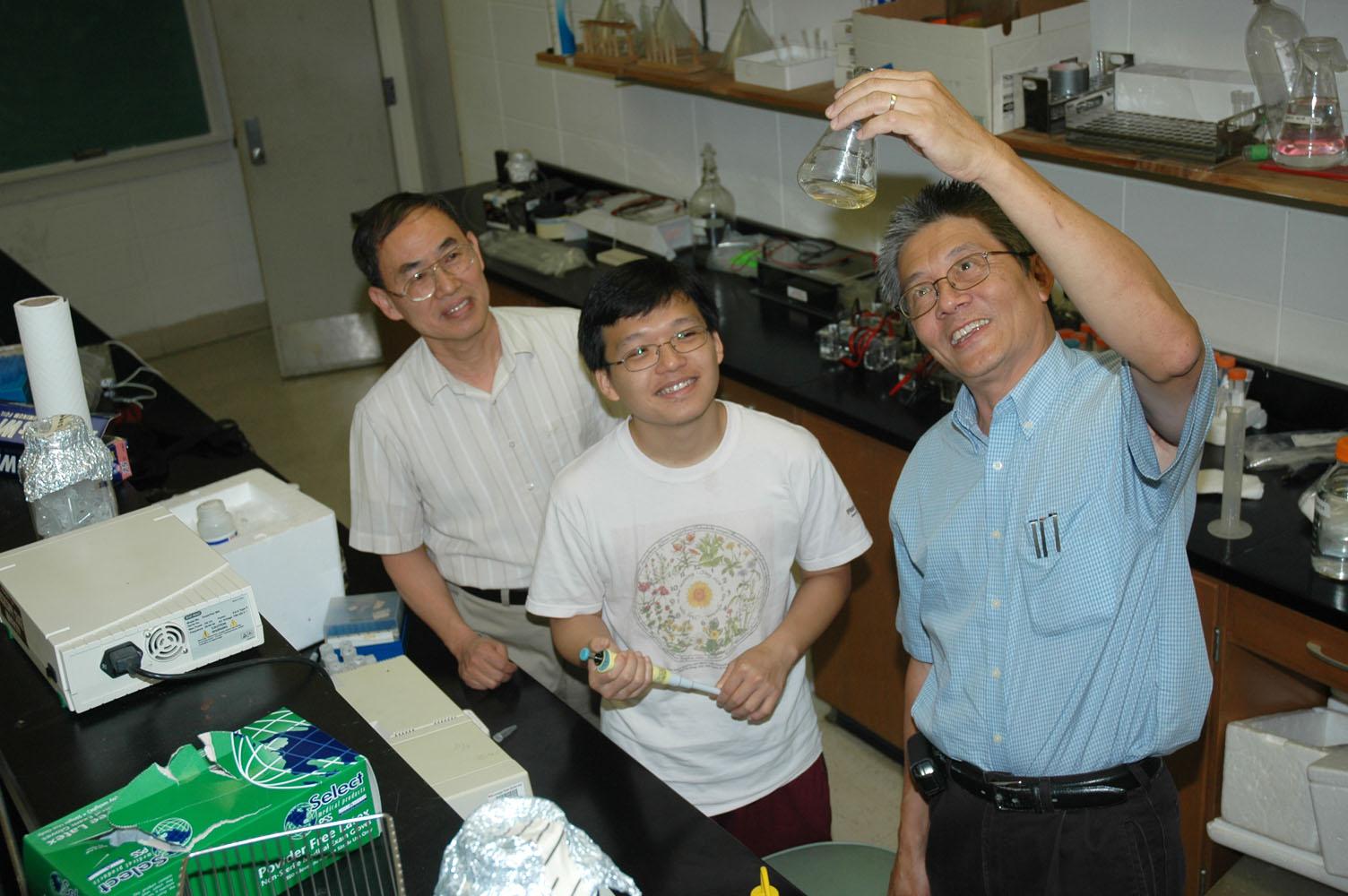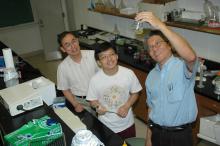Information Possibly Outdated
The information presented on this page was originally released on June 28, 2007. It may not be outdated, but please search our site for more current information. If you plan to quote or reference this information in a publication, please check with the Extension specialist or author before proceeding.
MSU student teamin competition with genetic engineering
MISSISSIPPI STATE -- Students at Mississippi State University are using genetic engineering to build “machines” once only dreamed about in science fiction.
Last year, nine graduate and undergraduate students genetically engineered E.-coli bacteria to glow green in the presence of hydrogen, providing a safe way to measure the hydrogen available in hard to probe places like fuel cells. They entered this new design in the International Genetically Engineered Machine, or iGEM, competition held at the Massachusetts Institute of Technology.
This year, the team is preparing another entry in the exclusive competition, which will be held in November. They are studying the pathway of lipid production with the ultimate goal of designing machines that can cause plants to produce more or less oil. If successful, this technique could develop alternative plants for energy production. Earlier this month, they received the DNA package from MIT with which they'll do their work.
Victor Ho, a doctoral student in biochemistry, said the team is working to design a way to shorten the time needed to analyze whether a particular genetic process has occurred.
“If we can label our protein with a fluorescent protein, then we can see it under ultraviolet light,” Ho said. “If we can make this new idea work, the analysis may take one or two days instead of two to three days.”
Filip To is team advisor and an agricultural and biological engineer with the Mississippi Agricultural and Forestry Experiment Station. He said the team's work with synthetic biology makes them pioneers in this field.
“Synthetic biology is a new discipline dealing with the creation of novel biological functions and tools. It is like building things with LEGO blocks, only at the genetic level,” To said.
“When we design a machine at this level, we are constructing the DNA to do a certain job. The methodology is similar to electronics design, and the organism that carries this machine expresses the functionality of the design, and it does not mutate.”
To said this work uses E.-coli or E.-coli as the carrier because these organisms are the most well-known and they are available in abundance. Work at MSU is done in the MAFES biochemistry lab and in the Life Sciences and Biotechnology Institute.
“We have all the equipment needed for genetic engineering,” To said.
He said the team is working on its projects in a very systematic way to design new parts and put these into the organisms to make them behave like machines.
“Just like people designing a computer chip, we use computer-aided design tools to design functional systems from DNA parts from a registry,” To said. “This science is a marriage between chemistry, biology, engineering and physics.”
To said this science holds tremendous potential for agriculture and many other scientific disciplines.
He advised the student team that competed last year in the iGEM contest among 37 universities worldwide. The MSU team earned an honorable mention among a prestigious group of competitors that included MIT, Harvard, Princeton, Brown, Penn State, Cambridge, Tokyo, and Edinburgh.
Lauren Beatty, a senior from Starkville majoring in biomedical engineering, was on the team last year and again this year.
“This is a great opportunity to get your feet wet and learn so much about genetic engineering,” Beatty said. “There is a tremendous learning curve in this work. Last year we basically started knowing nothing, and you can't even compare the difference in this year's team.”
Beatty said team members usually work in the lab on this project four hours a day for four days each week.
“Once you get your initial design and know the goals you want to accomplish, the next six to 10 weeks are spent doing lab work. You spend the rest of the time until the competition in November working on the reports, Web site, presentation and coming up with a more practical idea that anybody can use,” Beatty said.
Din-Pow Ma, a MAFES faculty member in Biochemistry and Molecular Biology Department, also advises this team.
Contact: Dr. Filip To (662) 325-3282



